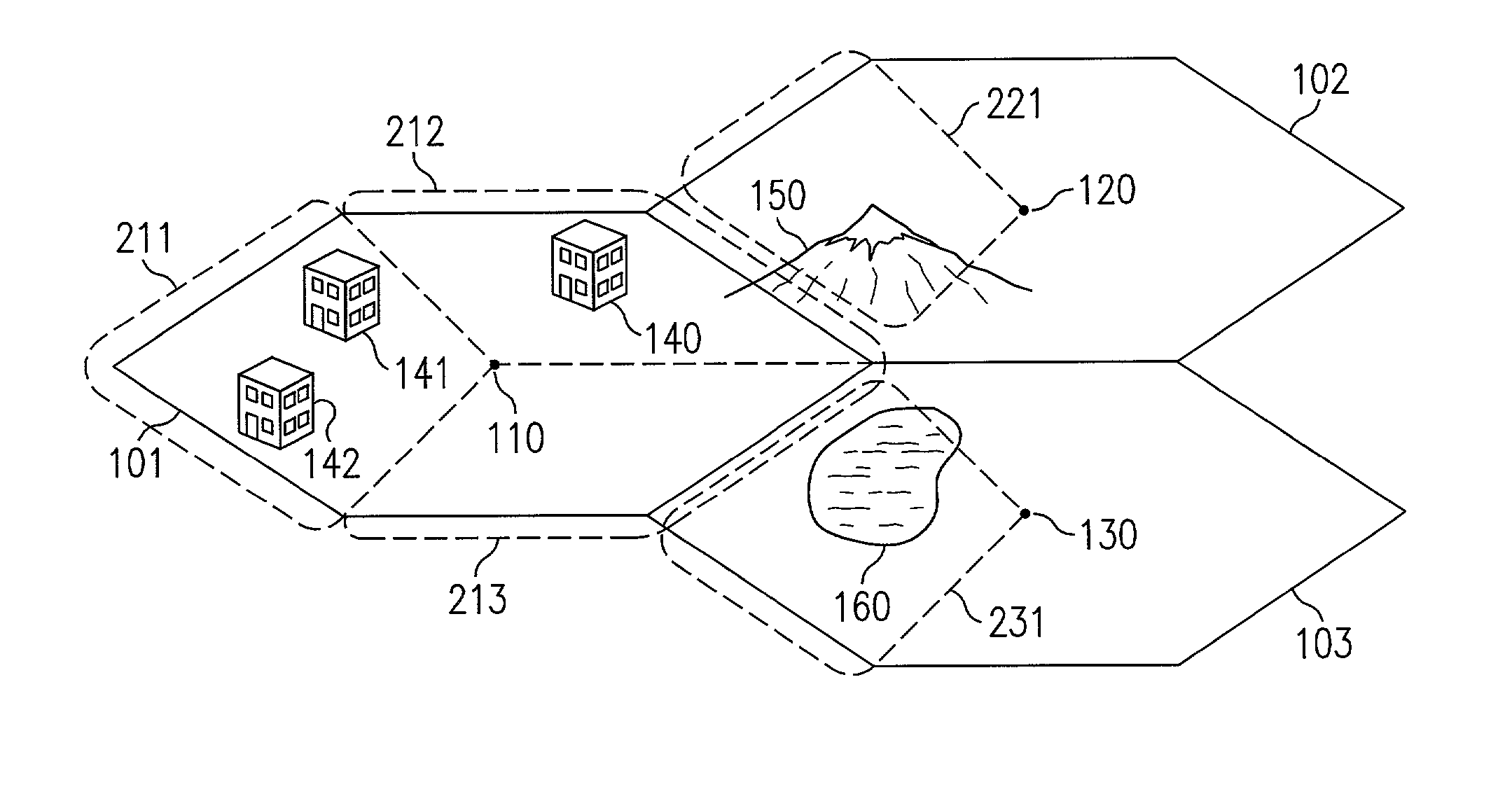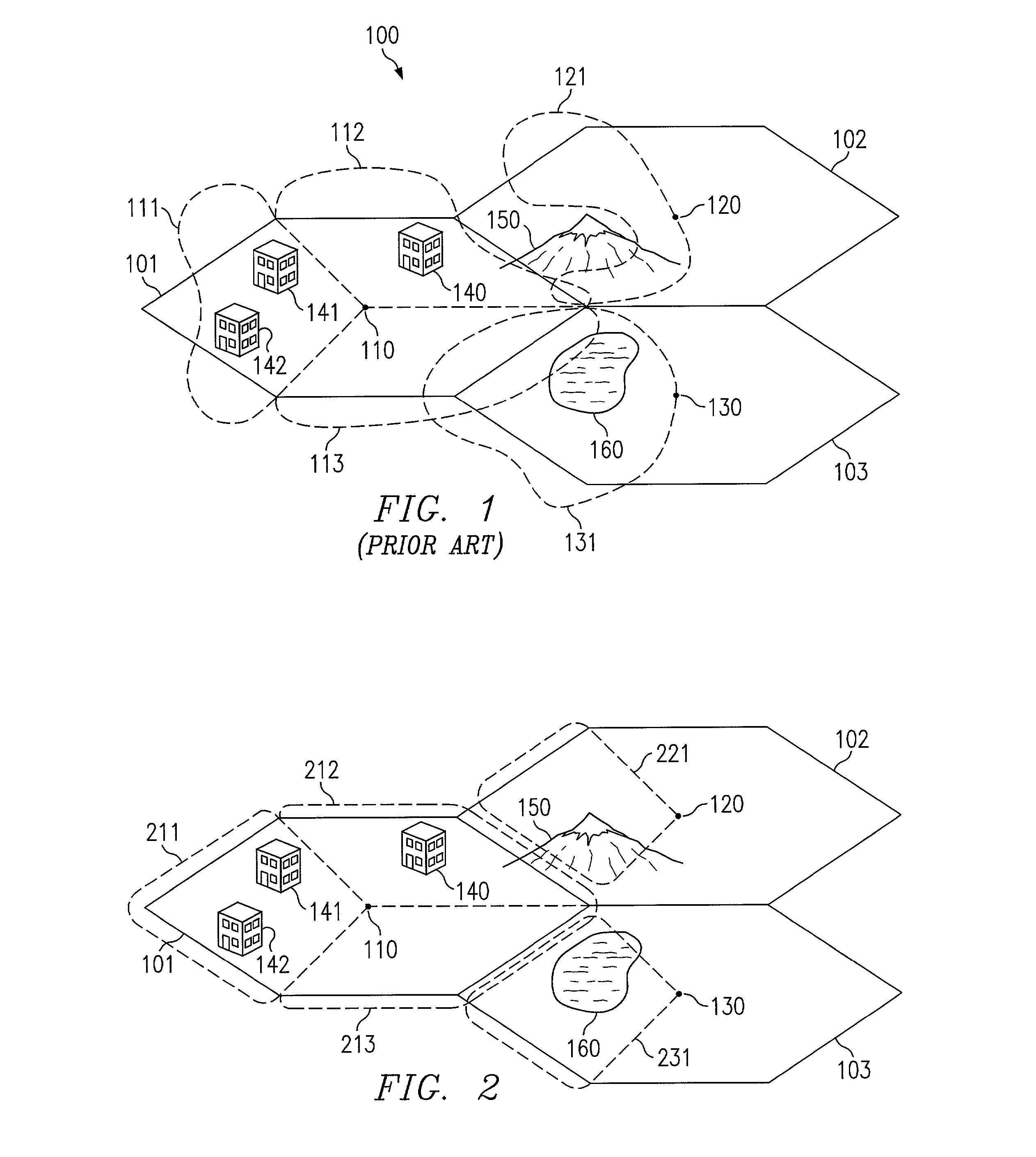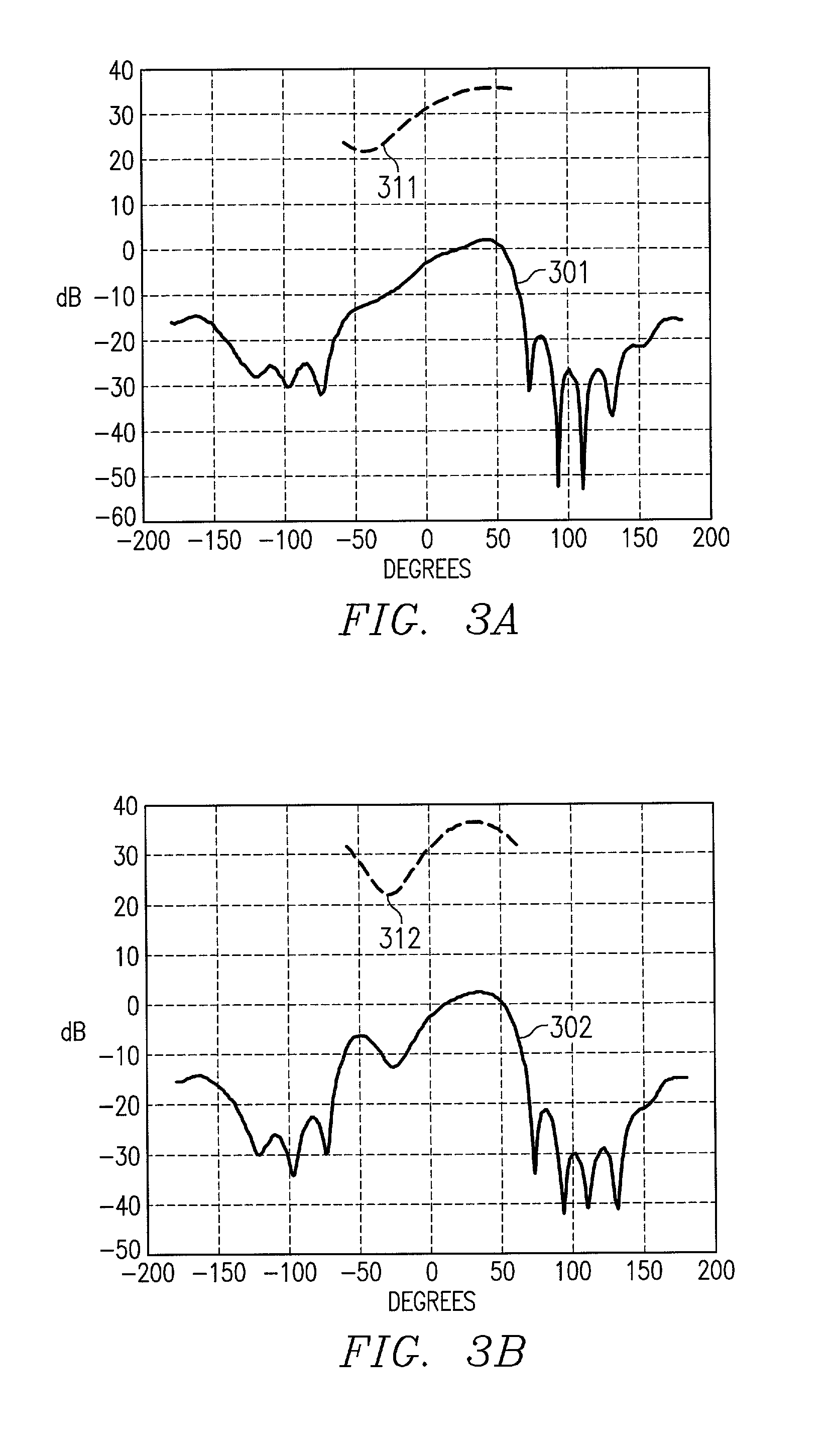Shapable antenna beams for cellular networks
a technology of cellular networks and antenna beams, applied in the direction of antennas, climate sustainability, sustainable buildings, etc., can solve the problems of increased interference experienced with respect to a user's signal of interest, increased communication system capacity and communication quality, and inability to meet the needs of users, etc., to improve service quality, increase communication capacity, and increase communication capacity
- Summary
- Abstract
- Description
- Claims
- Application Information
AI Technical Summary
Benefits of technology
Problems solved by technology
Method used
Image
Examples
Embodiment Construction
[0031]As illustrated in FIG. 1, cellular communications systems have typically been conceptualized for analysis and planning purposes as a grid of hexagonal areas (cells) of substantially equal size disposed in a service area. For example, cells 101, 102 and 103 of FIG. 1 are identified with the areas of communication associated with base transceiver stations (BTSs) 110, 120, and 130, respectively. Accordingly, service area 100 is provided communication services throughout by “honeycombed” deployment of such cells.
[0032]However, the communication coverage associated with a BTS may vary substantially from the theoretical boundaries of the hexagonal cell due to cell topology and morphology. For example, as shown in FIG. 1 cell 101 includes morphological features disposed therein. Accordingly, sector 112, having building 140 disposed therein, presents a contour appreciably different than the cell boundary the sector theoretically follows due to signal fading and / or shadowing associated...
PUM
 Login to View More
Login to View More Abstract
Description
Claims
Application Information
 Login to View More
Login to View More - R&D
- Intellectual Property
- Life Sciences
- Materials
- Tech Scout
- Unparalleled Data Quality
- Higher Quality Content
- 60% Fewer Hallucinations
Browse by: Latest US Patents, China's latest patents, Technical Efficacy Thesaurus, Application Domain, Technology Topic, Popular Technical Reports.
© 2025 PatSnap. All rights reserved.Legal|Privacy policy|Modern Slavery Act Transparency Statement|Sitemap|About US| Contact US: help@patsnap.com



